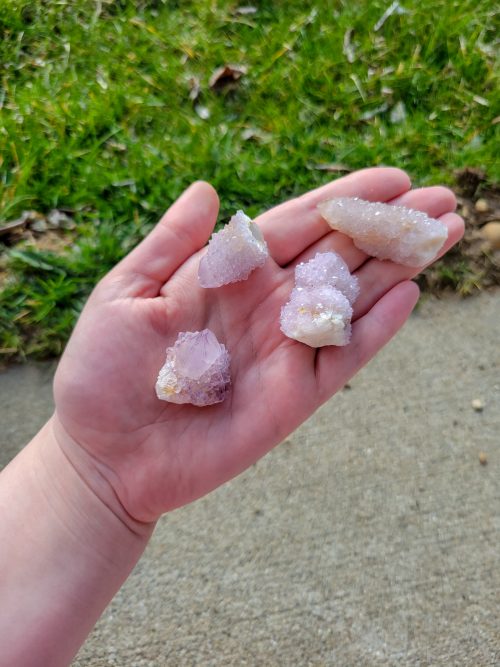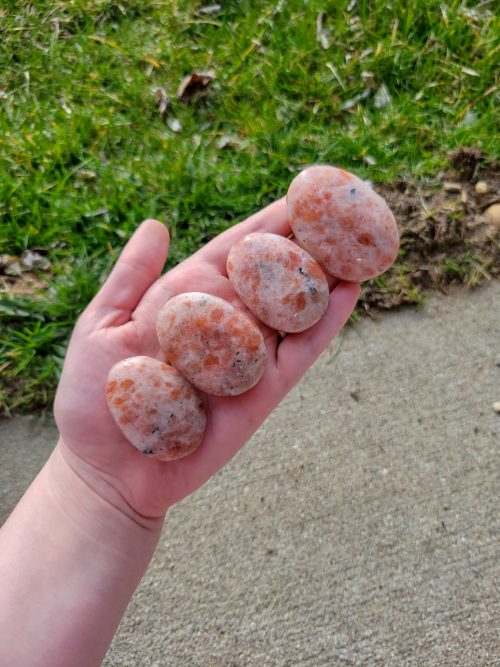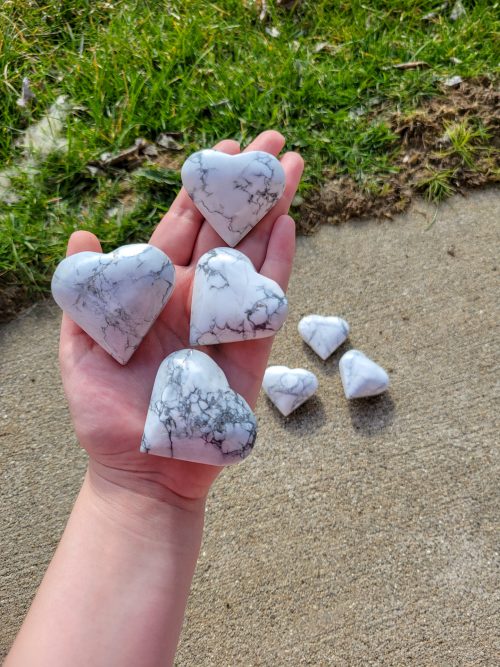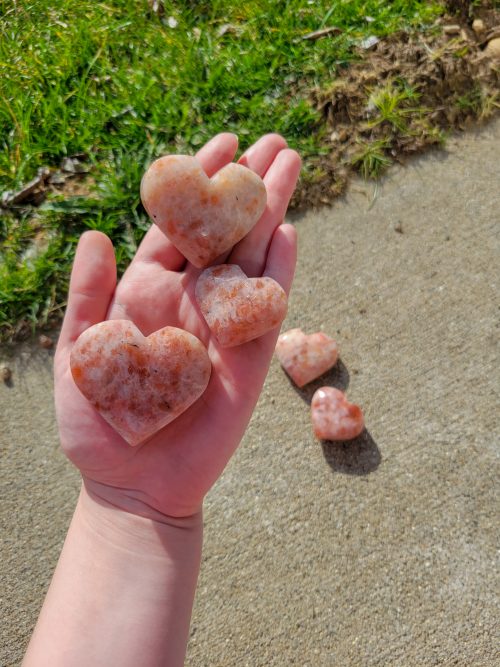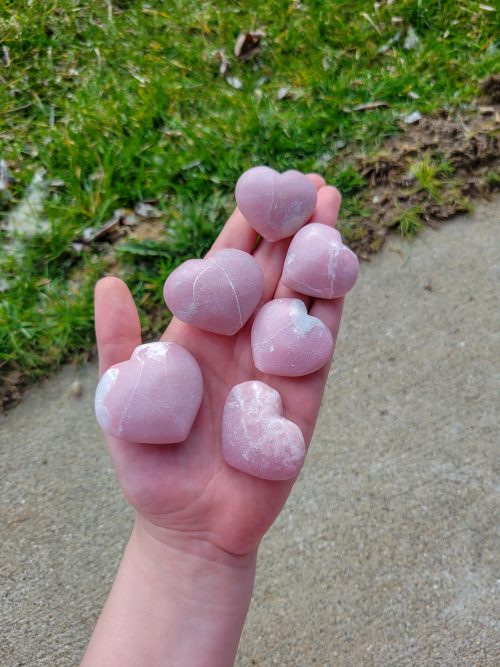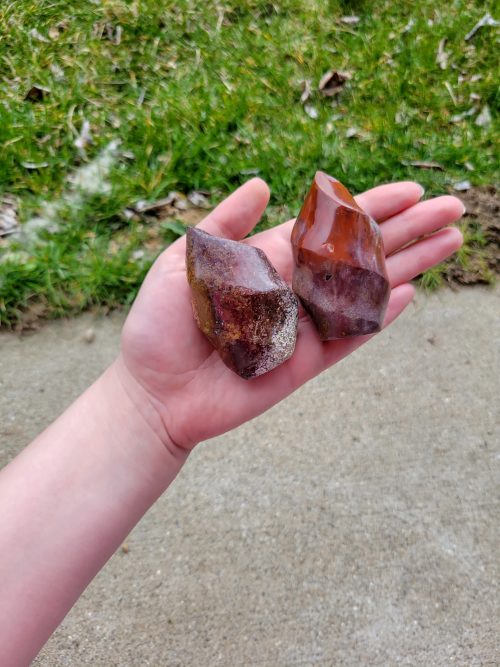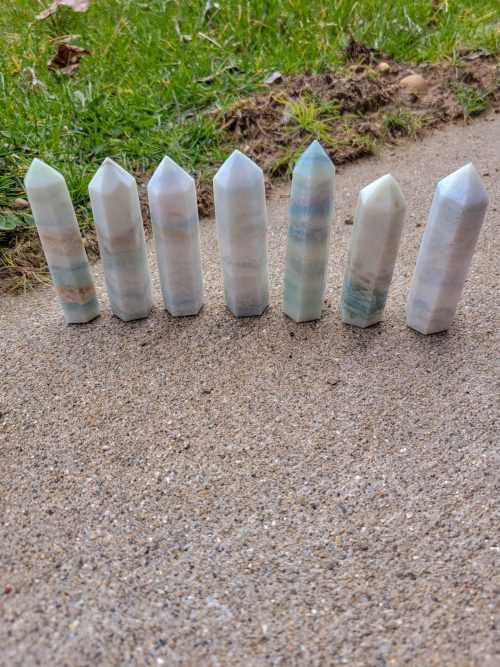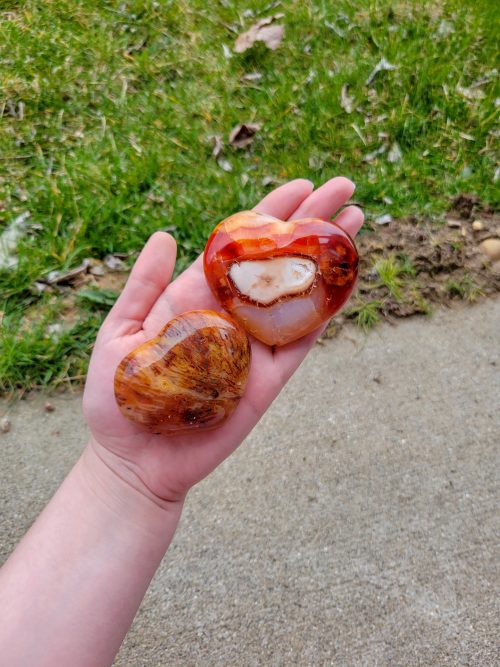-
4cm - 5cm Tall Cactus quartz is a rare specimen can only be found in the Magaliesberg Mountains in South Africa. Its color can range from a yellow hue (as pictured) to a purple hue. Cactus quartz is formed when a second generation of quartz points form on top of the original crystal points. ***Due to natural variations in stones, the appearance will vary***
-
5.5cm Wide Sunstone is a plagioclase feldspar. The glitter-like sheen in this stone comes from inclusions that are most commonly hematite but can also be goethite, pyrite, or copper (rare). This beautiful stone is formed in molten lava and can be found in many places around the world such as Australia, Canada, China, Congo, India, Mexico, Norway, Russia, Sri Lanka, Tanzania, the U.S. ***Due to natural variations in stones, appearance will vary***
-
4.5cm Wide Sunstone is a plagioclase feldspar. The glitter-like sheen in this stone comes from inclusions that are most commonly hematite but can also be goethite, pyrite, or copper (rare). This beautiful stone is formed in molten lava and can be found in many places around the world such as Australia, Canada, China, Congo, India, Mexico, Norway, Russia, Sri Lanka, Tanzania, the U.S. ***Due to natural variations in stones, appearance will vary***
-
5cm Wide Howlite was originally discovered in Canada by a geologist named Henry How which is where its name comes from. Howlite is formed in evaporate deposits with other borate and evaporate minerals. The outside of the mineral is not pleasant to the eye and is said to look like a head of cauliflower. However, when that is taken off, this beautiful mineral is found inside! This mineral is mainly found in Canada and the USA. ***Due to natural variations in stones, the appearance will vary***
-
4.5cm Wide Howlite was originally discovered in Canada by a geologist named Henry How which is where its name comes from. Howlite is formed in evaporate deposits with other borate and evaporate minerals. The outside of the mineral is not pleasant to the eye and is said to look like a head of cauliflower. However, when that is taken off, this beautiful mineral is found inside! This mineral is mainly found in Canada and the USA. ***Due to natural variations in stones, the appearance will vary***
-
5cm Wide Sunstone is a plagioclase feldspar. The glitter-like sheen in this stone comes from inclusions that are most commonly hematite but can also be goethite, pyrite, or copper (rare). This beautiful stone is formed in molten lava and can be found in many places around the world such as Australia, Canada, China, Congo, India, Mexico, Norway, Russia, Sri Lanka, Tanzania, the U.S. ***Due to natural variations in stones, appearance will vary***
-
4.5cm Wide Sunstone is a plagioclase feldspar. The glitter-like sheen in this stone comes from inclusions that are most commonly hematite but can also be goethite, pyrite, or copper (rare). This beautiful stone is formed in molten lava and can be found in many places around the world such as Australia, Canada, China, Congo, India, Mexico, Norway, Russia, Sri Lanka, Tanzania, the U.S. ***Due to natural variations in stones, appearance will vary***
-
5cm Wide Pink opal is formed by bubbling water near volcanic ash. It dissolves the silica and forms in nodules from volcanic activity. Most specimens contain pink opal mixed with minerals such as rhyolite. These beautiful specimens are only found in Peru and Australia. ***Due to natural variations in stones, appearance will vary***
-
4.5cm Wide Pink opal is formed by bubbling water near volcanic ash. It dissolves the silica and forms in nodules from volcanic activity. Most specimens contain pink opal mixed with minerals such as rhyolite. These beautiful specimens are only found in Peru and Australia. ***Due to natural variations in stones, appearance will vary***
-
7.5cm Tall Ocean jasper is a rare and colorful material exclusively from Madagascar. It is described as a variety of Orbicular Jasper due to its orb-like inclusions. Ocean jasper is a name for what is known to be a spherulitic chalcedony which is a cryptocrystalline variety of quartz. Cryptocrystalline is a term that means its crystals are too small to be seen with the naked eye. ***Due to natural variations in stones, appearance will vary***
-
7cm Wide Carnelian is a part of the Chalcedony family. It is formed when two silica minerals with different crystal structures grow together such as quartz and moganite. The firey orange and red colors come from iron oxides in the mineral. Carnelian can be found in Brazil, India, and Uruguay. ***Due to natural variations in stones, the appearance will vary***

